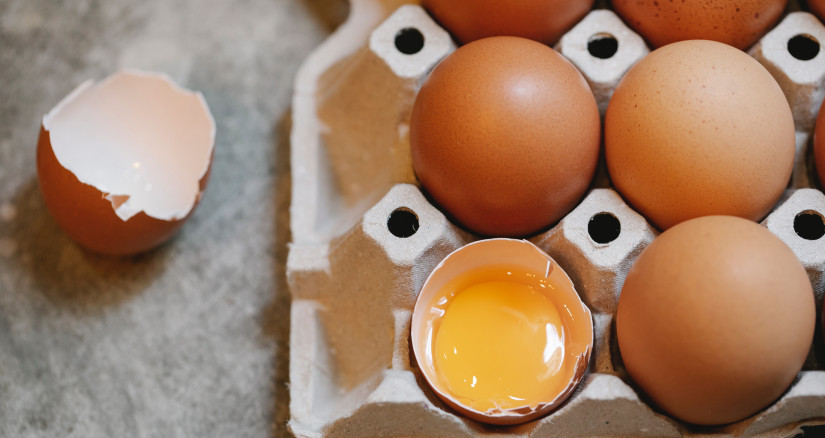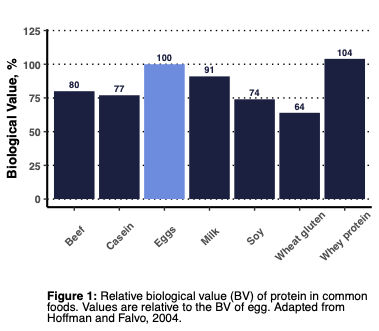
What Makes Eggs Great?
Eggs, specifically chicken eggs, are part of a daily diet for many people. Whether consumed as part of a meal or as a component of a recipe like a baked good, eggs are commonly incorporated into pet and animal food diets as a source of various nutrients. Eggs are packed with nutritional benefits and there are many advantages to including them in human and pet diets.
Nutritional benefits of eggs
Eggs are designed to contain everything an embryo needs to grow and develop and consequently, they are packed with all the nutrients needed to sustain an animal’s early life. In the nutrition world, eggs are generally considered to be a complete protein. This means that they contain all the essential amino acids, which are the amino acids that the body either cannot synthesize from precursors, or it cannot synthesize in sufficient amounts to meet metabolic needs such as growth or maintenance. The amino acids that are generally considered to be essential in mammals are shown in Table 1.1-2 The protein that it contains is also highly digestible and can be readily incorporated into tissues.3 One method to evaluate protein quality is the biological value (BV), which is the proportion of absorbed protein that is incorporated into tissues. Eggs have one of the greatest biological values, ahead of foods such as milk, casein, beef, and soy (Figure 1).4This means that eggs are one of the highest quality protein sources.
Table 1: Essential amino acids1
|
Essential Amino Acid |
Amount in Egg2 % of total protein |
|
Arginine3 |
6.35 |
|
Histidine |
2.28 |
|
Isoleucine |
4.97 |
|
Leucine |
8.47 |
|
Lysine |
6.71 |
|
Methionine |
3.37 |
|
Phenylalanine |
5.32 |
|
Threonine |
4.79 |
|
Tryptophan |
1.34 |
|
Valine |
5.92 |
1 Taurine is also essential for cats
2 Data from USDA Food Data Central Database, NDB: 1123
3 Not essential under normal conditions in adult humans

Aside from protein, eggs are loaded with other essential nutrients. Eggs are rich in nutrients such as vitamin B2, vitamin B12, vitamin D, calcium, selenium, choline, and antioxidants. Although the eggshell is generally thrown out; it provides enough calcium to meet twice the daily requirement of a human adult. Eggs can even be fortified to provide an increased amount of a specific nutrient, which can be used to correct deficiencies without changing eating habits. This is commonly done by increasing specific nutrients in the hen’s diet, which then gets passed to the egg. Some fat-soluble vitamins, when provided in excess in the hen’s diet, have been shown to be incorporated into the egg yolk. For example, poultry researchers have shown that feeding diets containing 35,014 IU/kg of vitamin D3 increases the vitamin D content of the egg enough that a human adult could meet their daily vitamin D requirement in just 2 eggs.5 In fact, this concentration of vitamin D in the diet was also shown to be beneficial to the hen by enhancing skeletal health.
Yolks versus whites
Diet fads in popular culture have purported that egg whites are a healthier option compared to yolks, presumably because of their lower fat and cholesterol content. While egg whites contain a significant proportion of the protein (~57%), they contain few other nutrients. Most of the nutrition is contained in the yolk, which is where all the fat-soluble vitamins are. The purpose of the yolk is to supply nutrients to the growing embryo, so it makes sense that they are concentrated here. By throwing out the yolk, many of the nutritional benefits that eggs can provide are lost.
There are numerous reasons why people incorporate eggs into their diets. They are packed with essential nutrients in a readily digestible form. Perhaps best of all, they are inexpensive and often readily available. Hopefully, the next time you see eggs on the shelves at the grocery store, you will see them differently.
References
1.National Research Council. 2006. Nutrient requirements of dogs and cats. National Academies Press.
2.Lopez, MJ, Mohiuddin, SS. 2021. Biochemistry, essential amino acids. StatPearls Publishing, Treasure Island (FL).
3.Schaafsma, G. 2000. The protein digestibility–Corrected amino acid score. J. Nutr. 130(7):1865S-1867S.
4.Hoffman, JR, Falvo, MJ. 2004. Protein–which is best? J. Sport Sci. Med. 3(3):118.
5.Wen, J, Livingston, K, Persia, M. 2019. Effect of high concentrations of dietary vitamin D3 on pullet and laying hen performance, skeleton health, eggshell quality, and yolk vitamin D3 content when fed to W36 laying hens from day of hatch until 68 wk of age. Poultry Sci. 98(12): 6713-6720.
Follow us on LinkedIn for the latest updates on all things happening here at BSM Partners.
About the Author
Dr. Chuck Zumbaugh works at BSM Partners as an Assistant Manager in Nutrition Services. He has experience in biochemistry, chemistry, software development, and animal nutrition. Outside of work, he enjoys spending time outdoors with his family in Kansas.
This content is the property of BSM Partners. Reproduction or retransmission or repurposing of any portion of this content is expressly prohibited without the approval of BSM Partners and is governed by the terms and conditions explained here.